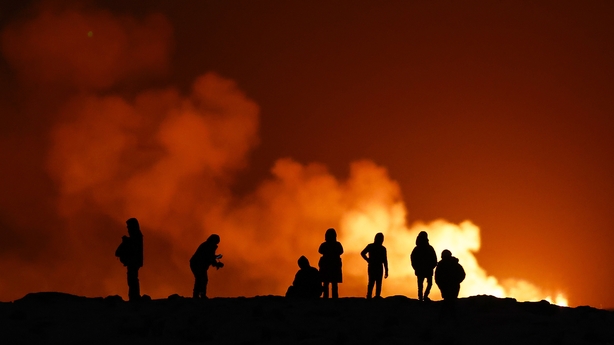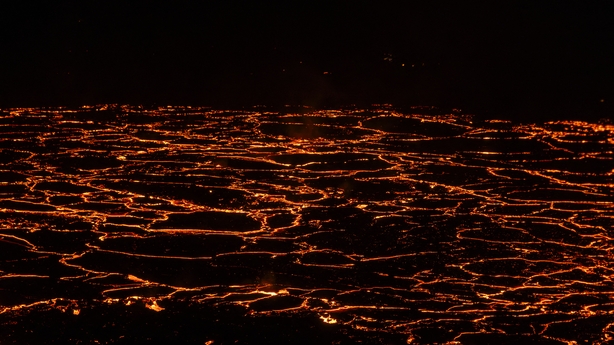Lava flows from a volcano in Iceland are slowing as heavy snows cloaked the area, reducing visibility of an eruption that, for now, looks set to spare a nearby town that was evacuated following weeks of earthquakes.
The eruption late on Monday on the Reykjanes peninsula in southwest Iceland spewed lava and smoke more than 100m into the air in a dramatic finale to weeks of waiting after the alarm was first raised over the seismic activity.
The government has said flights were unlikely to be impacted, easing worries of a repeat of the international travel chaos caused by the ash from another Icelandic volcanic eruption in 2010 just as the busy holiday travel season kicks in.

"It is difficult to see exactly what is going on, but when you get some glimpses through the snow it is obvious that it is just less and less lava flow," said Halldor Geirsson, associate professor at the Institute of Earth Sciences at the University of Iceland.
The eruption in the Svartsengi volcanic system might end over the weekend or next week, he added, or lava flows could continue at a slow rate for weeks or months similar to what happened at the nearby Fagradalsfjall system in 2021.
"I would think the most likely scenario is that it just stops," he said. "But if that happens, the pressure will start building again in the magma chamber, which is likely to trigger another eruption after a few weeks."
Authorities last month evacuated the nearly 4,000 inhabitants of the fishing town of Grindavik about 40km southwest of capital city Reykjavik, allowing them back intermittently to check on homes put at risk by the tremors.

Meanwhile, gases associated with the eruption briefly spiked on the peninsula on the southwestern tip of Iceland, which also accommodates the island's main international airport, which remained open though some flights suffered delays due to the heavy snowfall, an airport spokesman said.
The level of sulphur dioxide in the air near the town of Keflavik, where the airport is located, rose from 0.2 micrograms per cubic meter at 6.50am to above 1,300 an hour later, according to Iceland's environmental agency.
The levels soon returned to normal. Sulphur dioxide can be harmful to health at high concentrations and officials had cautioned that gas pollution could occur in the area of nearby Reykjavik.
The government has said the eruption does not present a threat to life.

